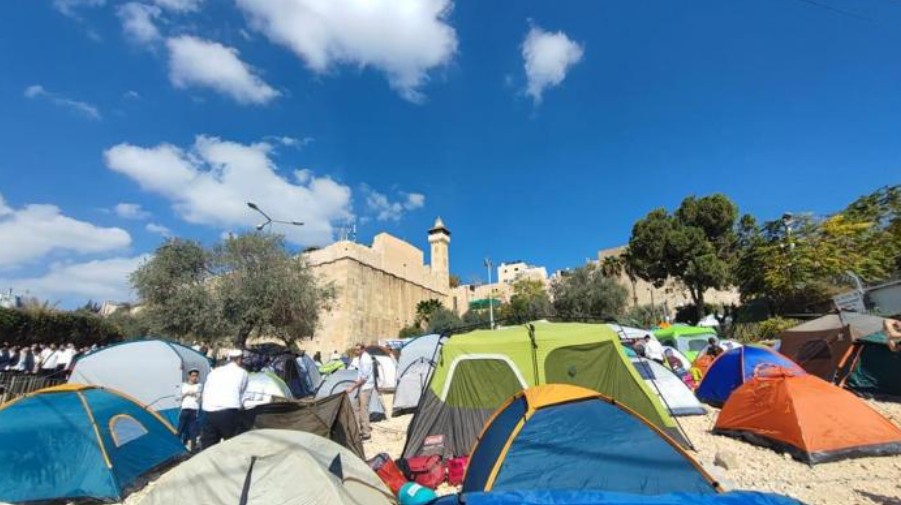
In Hebron for Shabbat Chayei Sarah 2022 – The Jewish Community of Hebron
After the Bnei Ches agreed to sell Avraham a burial plot for Sarah, the Torah relates that he bowed down to them (23:12). The Seforno (ibid) explains that Avraham bowed to them as a way of expressing gratitude. We also see that when Eliezer saw his mission to find a wife for Yitzhak proving successful, he bowed down to Hashem (24:52). What is the connection between bowing and gratitude?
True gratitude is the recognition that we are indebted to someone, and we humble ourselves to show appreciation to our benefactor. The word lehodos (to thank) shares the same root as modah (to admit), indicating that gratitude is an expression of acknowledgment. As the Bereishis Rabbah (7) teaches, true gratitude involves admitting that we have received kindness. Feeling humbled is central to sincere gratitude. The Sefer Chareidim (9:3) cites his Rebbi, Rav Yosef Sagish, who teaches that when we reflect on the infinite kindnesses Hashem bestows upon us, we are humbled and ashamed if we have sinned, which compels us to do teshuvah.
This concept is also expressed in Modim, where we bow both at the beginning and end of the blessing, unlike other blessings. The reason we bow is because we are so humbled by Hashem’s tremendous kindness. Rabbi Avigdor Miller cautioned against bowing out of rote. He advised that we should reflect on our gratitude to Hashem when we bow. He would say, “Don’t waste a bow.” When we bow to Hashem, we have the opportunity to make it a meaningful experience. He recommended thinking about something specific we are grateful for just before we say Modim Anachnu Lach and keeping that in mind as we bow. This ensures that our bowing is fueled by gratitude, rather than being a mere habit.
Another unique aspect of Modim is that it is the only blessing recited both by the congregation and the chazzan during the chazzan’s repetition. The Abudraham explains that this reflects our submission to Hashem. Just as a servant should express their allegiance to their master personally, not through a messenger, we should personally express our submission to Hashem. Unlike other blessings that request things, Modim is about acknowledging what Hashem has already given us, and thus, it cannot be said through a messenger. When we feel the need to express our gratitude, we should do so personally.
When Rav Elyashiv was in his final years, he needed surgery, and a top surgeon was flown in from America. After the surgery, Rav Elyashiv asked those around him, “How do I say thank you in English?” Surprised, they said, “We’ll thank him for you.” But Rav Elyashiv insisted, “No, I need to thank him personally.” He practiced how to say “thank you” in English and then thanked the surgeon directly in his own language. This highlights the deep importance of personal gratitude.
An additional reason why Modim is unique is that it provides us with protection. As the Midrash (Shir HaShirim Rabba 7) teaches, when we thank Hashem for miracles, we are protected from other misfortunes. So when we recite Modim, thanking Hashem for “Your miracles that are with us each day…”, we are granted special protection.
During the War of Independence, the city of Tzfat was heavily bombarded by enemy artillery, and many Jews sought refuge in the Ari Ashkenaz synagogue. One day, a shell exploded in the synagogue’s courtyard, sending shrapnel flying. One man, who was praying Shmoneh Esrei, was bowing during Modim when the shrapnel miraculously passed over him, sparing his life! (Eretz Avosainu p.263)
Compiled by Daniel Shasha. To receive this by email or to subscribe to our weekly newsletter please contact us at [email protected]
